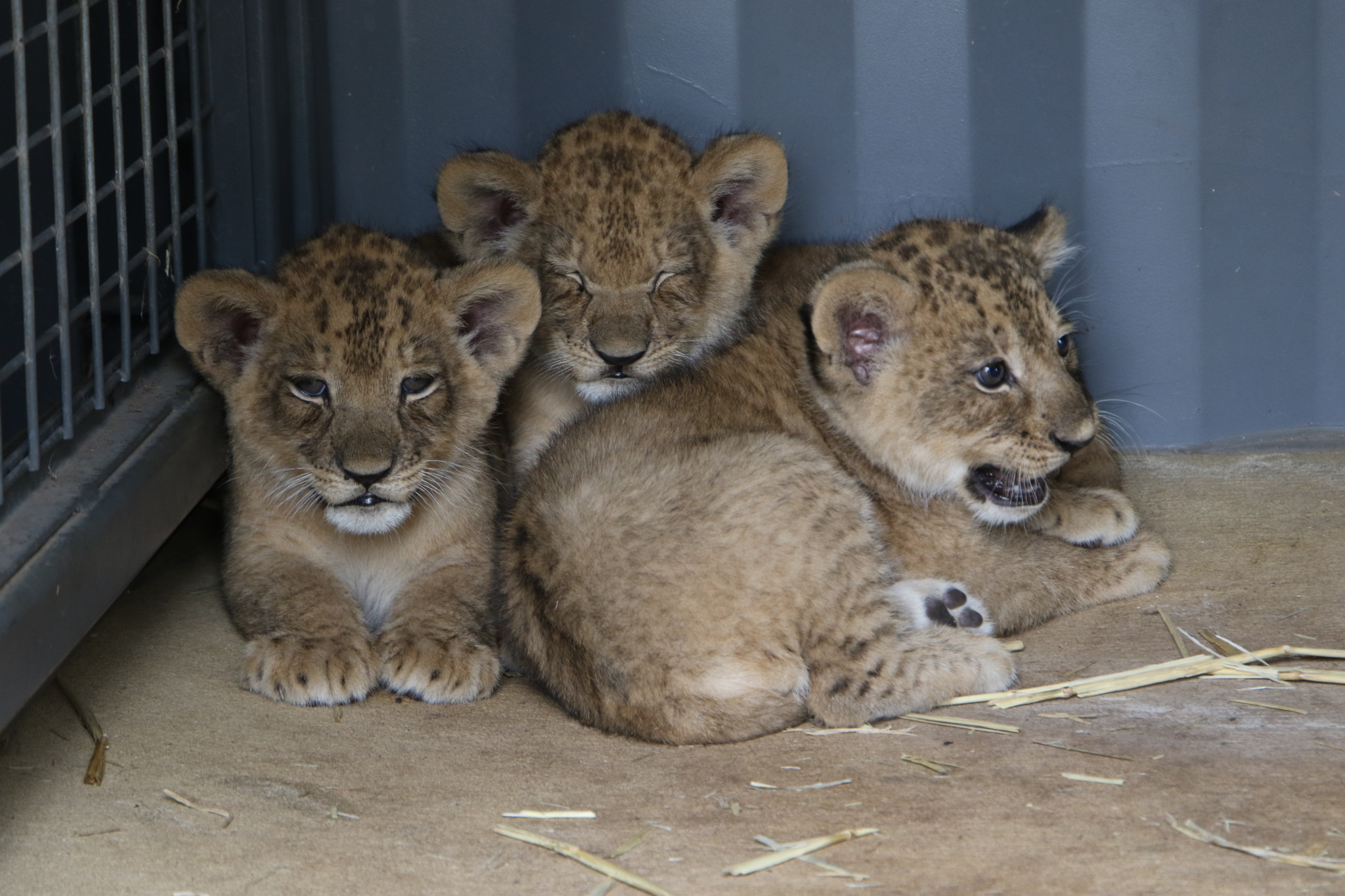General News
23 December, 2023
Trio of lion cubs doing well at Dubbo zoo
Healthy new trio of lion cubs are thriving at Taronga Western Plains Zoo

Born on October 4, Taronga Western Plains Zoo’s new lion cubs are the second litter for lioness, Marion, and lion, Lwazi, after the pair welcomed Mara, Amali, and Imani, in April 2022.
Senior keeper, Megan Lewis, said the cubs have spent the past couple of months bonding with mum behind the scenes, where they are meeting all of their developmental milestones and becoming increasingly curious about the outside world.
“Our cubs have just had their first vaccinations and microchips, as well as a veterinary check and a weigh in,” said keeper Lewis.
“This is all really important, to make sure they’re tracking along really well with their development,” she added
They are also becoming more independent, she enthused. “This means we can take the next big step, of introducing the cubs to their older siblings and dad.
“Once they meet each other, and do some bonding in our back-of-house area, then we’ll be putting them all out into our Lion Pride Lands habitat together as a lovely family of eight!”
Fans can keep an eye on the zoo’s social channels for details on the naming of these precious bundles, and for more news on when you’ll be able to see them. In the meantime, guests can see the zoo’s three elder states-lions, Kiamba, Zalika, and Tiombe, as well as Lwazi and the three young lionesses.
Lions are not the only babies bouncing around at Taronga Western Plains Zoo this summer, however, with five-month-old Jabulani in the main white rhino paddock, and six meerkat pups at The Waterhole.
Guests can see the meerkat pups busily digging, foraging, playing and of course doing sentry duty.
Meerkats reach their full height at just six months of age, so get in quick to see these adorable babies for yourself.
For the first time at Taronga Western Plains Zoo, this summer guests will be given a window into the Regent Honeyeater Recovery Program with the critically endangered natives now visible in the Wildlife Hospital aviary.
With fewer than 400 remaining in the wild, this is a rare opportunity to see this elusive nomadic pollinator up-close, and learn about Taronga’s efforts to save this flagship species from extinction.


